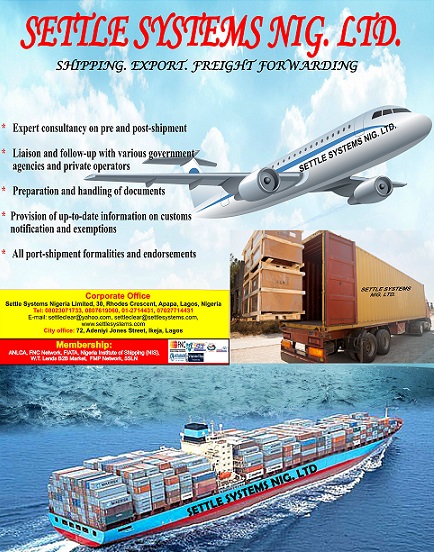Analysis
Another Sifax Terminal Fire Outbreak And The Familiar Half Truths

BY GBOGBOWA GBOWA
SIFAX Group earlier today, Sunday, February 25, 2024, announced a fire incident at its Ports & Cargo Terminal located at the Tin Can Island Port, Lagos, adding that the incident affected only the ICT section of the terminal.
While the conglomerate in a statement to the press noted that only key IT equipment was affected by the inferno, it assured all port users and critical stakeholders that there was no reason to panic as operations would only be affected minimally, adding that repairs works is already ongoing; and that operations will resume fully tomorrow, Monday, February 26, 2024.
According to the statement, although the inferno affected key IT equipment only, the unfortunate incident did not result in any data loss due to the excellent back-up plan the company has put in place to safeguard its data.
The statement reportedly signed by Sifax Group spokesman, Muyiwa Akande reads: “This is to inform all stakeholders of Ports & Cargo Handling Services Limited, a subsidiary of SIFAX Group, that there was a fire incident at our facility located at the Tin Can Island Port, Apapa, Lagos, on Saturday, February 24, 2024.
“The inferno, which happened at our IT office, affected key IT equipment. However we are glad to report that this unfortunate incident has not resulted in any data loss due to the excellent back-up plan the company has put in place to safeguard its data.
“While minimal disruption to our services is expected, we are currently working with all relevant agencies, especially the Nigerian Customs Service, Tin Can Island Command, to restore normal port operations latest by Monday, February 26, 2024.
“We are using this opportunity to assure all our stakeholders, including clearing agents, consignees and other port users that we have activated our approved business continuity plan to keep our operations running while we work assiduously to meet the scheduled date of resuming normal port operations.”
Despite the assurances, industry observers thinks that if the explanations and assurances fits the conglomerate’s perceived familiar half truths in the past, then freight forwarders, clearing agents, transporters and other players in the cargo delivery value chain may have to brace up for serious business disruption.
While the organization assures that “we have activated our approved business continuity plan to keep our operations running”, in another breathe, it talks about ‘minimal disruption’ expected to be fixed between yesterday, Saturday when the incident happened, and today when it notified the general public of same.
If it is not official half truth, what exactly does the group’s contingency plan amid evident threats to operational disruption entail? Sifax in its statement said it was working with all relevant stakeholders inclding the Area Customs Command to avert envisaged prolong delay in resumption of operation. Why not simply stick with this common sensical truth, since the incidences of fire outbreak is a universal occupational disaster that can happen to anyone or organisation, no matter how well fortified?
It will be recalled that on July 21, 2023 when the same terminal (Ports and Cargo) suffered similar incident that gutted one of its shore cranes, its spokesman, Muyiwa Akande also sought to downplay the potential devastating toll the fire outbreak would have had had but for the timely intervention of corporate operational players.
In its attempt to douse fears about the extent of damage and the true position of the fire that broke out whilst a cargo ship, Hapag Lloyd, was been discharged, Sifax Group said that whereas it was aware of a technical fault with the affected operating crane, it nonetheless averred that before it had time to fix the problem, the equipment ruptured into flame.
But Akande choose to repudiate media reports that broke the news, as he alleged inaccuracies in the said reports.
Pinnacle Time had at the time disputed the posturing of the conglomerate as an act of corporate arrogance, and posed questions that were not reacted to, to our knowledge. Below is a reprint of part of the report that captured the reaction of Sifax Group to the news report it labeled offensive:

“Our attention has been drawn to some misleading reports in the press after a fire incident at a terminal operated by one of our subsidiaries, Ports & Cargo Handling Services Limited, at Tin Can Island Port, Lagos. The facts about the fire incident are as follows:
“At about 12:30 pm on Thursday, July 20, 2023, one of our equipment, a shore crane, developed a sudden technical fault and before anything could be done to fix it, it went up in flames.
“There was a quick response from all stakeholders which resulted in putting out the fire as soon as possible, even though substantial damage was done to the equipment. Normalcy was returned to the terminal after containing the fire and our operations resumed”, he added.
While the industry and all port users are happy that the fire outbreak was contained as early as possible to forestall further spread, the claim by SIFAX that it was aware before hand of the technical fault however appears begging the issue and smacks of some sort of official lie; otherwise, smacks of even worse official attitude, that of gross negligence and a telling poor corporate culture, that neglects the safety of its workers.
Properly analyzed, the claim between discovering the said technical fault and taking necessary safety precaution is begging for answer, following the organisation’s admission that “…before anything could be done to fix it, it went up in flames”, that sounds confusing.
To the discerning mind, above claim even sounds dishonest or at best half truth, because if like the defence suggested, the fault was discovered, and yet the crane operator was still left seated and working before the equipment got engulfed in fire; the gap in action suggests something is unhealthy with the company’s safety procedure.
Olumuyiwa explained that the vessel at berth as at the time of the incident was not affected by the fire while containers, both those on board the vessel as well as other consignments at the terminal, were also not affected.
“There was no loss of life, as he operator working on the affected equipment was safely rescued without any injury.”
And when the statement emphasized that the said equipment as well as all other equipment and facilities at the terminal are all insured, one is horrified about the fate of the workers, who may have died or been rendered disabled as a result of the organisation’s questionable safety negligence.
Although Olumuyiwa said “As a company, we are committed to operational excellence in a safe and secure environment for the collective good of all our stakeholders – customers, agents, staff, regulators and the general public”, it bears reconciling with the facts of the present incident, giving the question of the time the crane technical fault was discovered, time of bursting into fire and the time the crane operator was eventually evacuated; vide dangerous emergency maneuver.
It will be recalled that eye witness account corroborating the success of curtailing the fire from further spreading informed that whereas no casualty was recorded, “the other shore crane operator rescued the operator of the burning crane with his spreader.”
Thus for the courageous shore crane operator’s action, perhaps the story may have been different.
While appealing to the public “to disregard any sensational reports on the incident and stay with the facts as stated here”, it would appear that SIFAX attempted to be clever by half with all the facts.
Like many organizations who regard the local media as the weeping child with which they can always wipe their dirty hands, SIFAX said, “We urge the press to please ensure their reports are accurate so members of the public are not misled and create unnecessary panic in the industry and beyond.”
Regarded as a highly responsible operator, SIFAX owe the industry, including the maritime media convincing explanation why the crane driver was left working after the crane had reportedly been discovered to have developed a fault.
It’s either there’s an unavoidable twist in this regard or that the company may have unwittingly lied and is the one misleading the general public, ultimately.




























